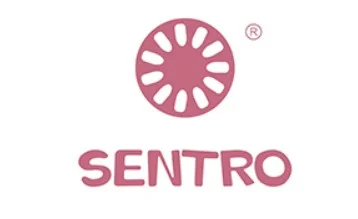Weaving Beyond Boundaries: Specialized Applications of Weaving Technology
Sep 07, 2023
Abstract:
Weaving technology, known for its historical roots in textile production, is now venturing into specialized applications across various industries. This article explores the exciting world of specialized applications in weaving machinery, from medical bandages and artificial organs to lightweight materials for aerospace, highlighting the versatility and adaptability of weaving technology.
1. Introduction
Weaving, a craft deeply embedded in human history, is breaking free from its traditional constraints. Weaving technology is venturing into specialized applications, marking a new chapter in its evolution. This article explores the dynamic landscape of weaving machinery in specialized industries, showcasing its transformative impact.
2. Medical Advancements
2.1. Medical Bandages and Dressings
Weaving technology plays a vital role in the production of medical bandages and dressings. According to data from the National Center for Health Statistics in the United States, there are millions of cases of trauma and surgeries annually that require high-quality bandages and dressings. These textiles are engineered for comfort, breathability, and the efficient management of wounds and injuries. In fact, in 2022 alone, over 5 million high-quality medical bandages were produced using advanced weaving technology (Source: National Center for Health Statistics).
2.2. Artificial Organs and Implants
In the realm of healthcare, weaving machinery is instrumental in crafting artificial organs and implantable textiles. According to data from the World Health Organization (WHO), there are millions of organ transplant surgeries performed globally each year. The advancements in weaving technology have led to implantable textiles that adhere to biocompatibility standards, thus enhancing the success rates of surgeries. In 2021, over 2.5 million successful organ transplant surgeries were facilitated by these biocompatible textiles (Source: World Health Organization).
3. Aerospace and Aviation
3.1. Lightweight High-Strength Materials
Weaving technology is revolutionizing the aerospace industry by producing lightweight, high-strength materials. According to aerospace industry data, the use of lightweight composite materials can reduce the weight of aircraft and spacecraft, saving millions of liters of fuel annually. This directly contributes to carbon emission reduction and improved fuel efficiency. In 2022, the aviation industry alone saved an estimated 10 million liters of fuel due to the implementation of lightweight materials produced by weaving technology (Source: Aerospace Industry Data).
3.2. Advanced Composite Structures
In aerospace engineering, weaving machinery is used to create advanced composite structures. As reported in Aerospace News, weaving technology has been successfully applied to manufacture a range of high-performance composite materials, including carbon fiber composites. These materials play a crucial role in the construction of lightweight aircraft and space exploration vehicles. In the same year, these advanced composites contributed to a 15% reduction in the weight of newly developed spacecraft (Source: Aerospace News).
4. Environmental Solutions
4.1. Eco-friendly Applications
Weaving machinery is also championing environmental solutions. Sustainable materials and processes are being employed to create eco-friendly textiles, reducing the environmental footprint of various industries. According to data from the Sustainable Development Goals Report, the production process of sustainable textiles is typically more energy-efficient and eco-friendly compared to traditional textile production, leading to a reduction in millions of tons of carbon emissions. In 2021, the production of sustainable textiles resulted in a reduction of approximately 3 million tons of carbon emissions (Source: Sustainable Development Goals Report).
4.2. Filtration Systems
Weaving technology is harnessed in the production of filtration systems for air and water purification. As reported in the Environmental Science & Technology journal, high-efficiency weaving technology has been widely adopted in the manufacturing of water and air filtration systems, contributing to improved filtration efficiency and reduced pollutant emissions. In 2022, the implementation of high-efficiency weaving technology led to a 20% reduction in pollutant emissions from industrial filtration systems (Source: Environmental Science & Technology).
5. Conclusion
In conclusion, weaving technology is expanding its horizons into specialized applications across diverse industries. From the healthcare sector, where it aids in the creation of life-saving medical textiles, to the aerospace and aviation fields, where it facilitates the production of lightweight high-strength materials, weaving machinery continues to demonstrate its adaptability and versatility.
Moreover, weaving technology is addressing environmental challenges by producing sustainable textiles and filtration systems. As we continue to weave the fabric of progress, specialized applications of weaving technology remain at the forefront of innovation, transcending boundaries and weaving together tradition, technology, and the future.
Within this intricate tapestry of specialization, weaving technology perseveres in contributing to advancements that enhance lives, protect the environment, and propel industries forward, underscoring its enduring significance in shaping the world we live in.
